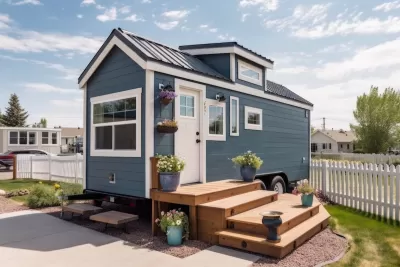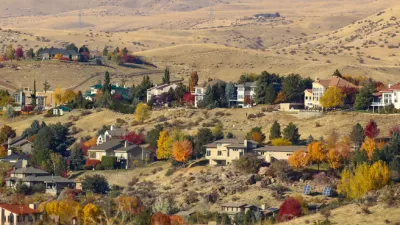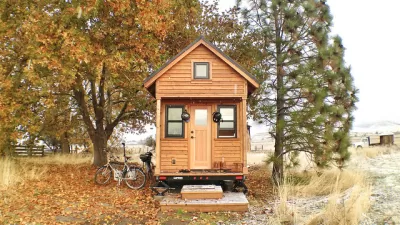Tiny homes were one of the hot button topics of the previous decade. In 2023? Not so much.

An article by Eve Andrews for Grist critiques the tiny homes movement—an idea that seems to have come and gone in the public consciousness, not to mention the newsfeeds of planning publications.
What once seemed like a revolution in housing and culture—born from a crisis of housing affordability and the ravages of the Great Recession—now seems like an “Instagram aesthetic,” according to Andrews.
But for all the hubbub, tiny houses never really entered the mainstream realm of homeownership. Instead, they entered the province of tourists seeking a brief decampment to a smaller-scale, climate-friendly lifestyle. You’re more likely to encounter one while scrolling through $300-a-night Airbnb listings than browsing Zillow.
Still, Andrews is unwilling to call the tiny homes movement a failure, rather it’s more of a victim of unrealistic expectations: “[T]he expectations placed upon it were too high: that it could take on all the sins of a bloated, profit-driven housing industry, and deliver us as a nation to a humbler, happier way of living,” writes Andrews.
The source article, linked below, includes a while history of the tiny homes movement, including the highs provided by the debut of a Netflix home improvement show in 2014, Tiny House Nation, to the lows of the Airbnb-ification of the movement.
Andrews also sees some reason for optimism that the ideas that birthed the tiny homes movement still have a chance at wider adoption, including in the resources tiny homes provide people experiencing homelessness and as a popular new typology of housing, the accessory dwelling unit.
FULL STORY: Did big expectations doom the tiny house movement?

Alabama: Trump Terminates Settlements for Black Communities Harmed By Raw Sewage
Trump deemed the landmark civil rights agreement “illegal DEI and environmental justice policy.”

Planetizen Federal Action Tracker
A weekly monitor of how Trump’s orders and actions are impacting planners and planning in America.

The 120 Year Old Tiny Home Villages That Sheltered San Francisco’s Earthquake Refugees
More than a century ago, San Francisco mobilized to house thousands of residents displaced by the 1906 earthquake. Could their strategy offer a model for the present?

Ken Jennings Launches Transit Web Series
The Jeopardy champ wants you to ride public transit.

BLM To Rescind Public Lands Rule
The change will downgrade conservation, once again putting federal land at risk for mining and other extractive uses.

Indy Neighborhood Group Builds Temporary Multi-Use Path
Community members, aided in part by funding from the city, repurposed a vehicle lane to create a protected bike and pedestrian path for the summer season.
Urban Design for Planners 1: Software Tools
This six-course series explores essential urban design concepts using open source software and equips planners with the tools they need to participate fully in the urban design process.
Planning for Universal Design
Learn the tools for implementing Universal Design in planning regulations.
Clanton & Associates, Inc.
Jessamine County Fiscal Court
Institute for Housing and Urban Development Studies (IHS)
City of Grandview
Harvard GSD Executive Education
Toledo-Lucas County Plan Commissions
Salt Lake City
NYU Wagner Graduate School of Public Service




























